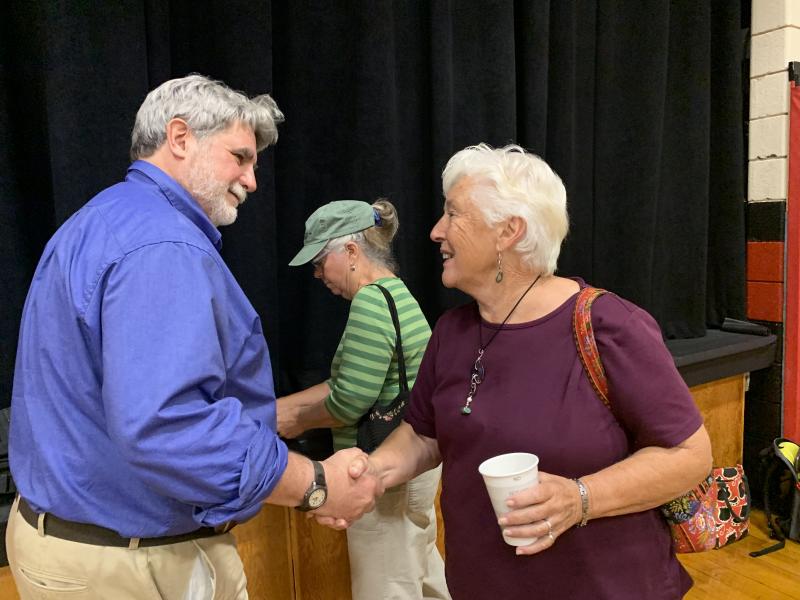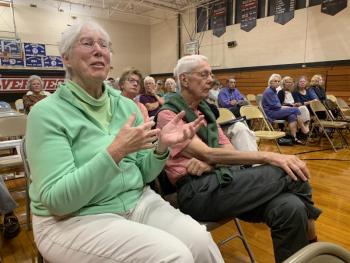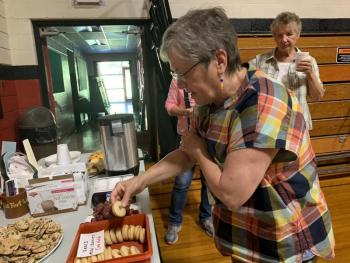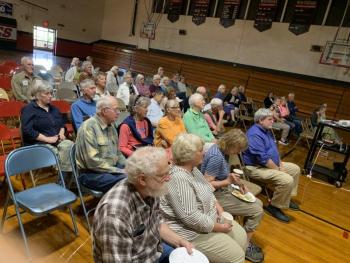Birchbark, oysters and (very) early summer residents part of bicentennial kickoff talk in Wiscasset
Maine started getting summer people from New York 13,000 years ago, Maine Historic Preservation Commission’s senior archeologist said. We know because they had tools of stone from the lower Hudson Valley, Arthur Speiss told a gathering in Wiscasset Middle High School’s Stover Auditorium Sunday.
The talk on Native Americans’ millennia in Maine before it was Maine kicked off Lincoln County Historical Association’s and Old Fort Western’s joint lecture series for the state’s bicentennial. About 60 people came, said LCHA trustee and bicentennial committee chair Ryan Larochelle. Considering it was a beautiful afternoon and the Patriots were playing, organizers were pretty pleased with the turnout, he said.
“This was so nice ... and really consciousness-raising,” including the parts about the rising sea level covering more and more of the land since the Ice Age ended, Westport Island’s Callie Conner said.
Speiss covered area Native Americans’ transportation, including the move from dugout to the lighter birchbark canoes and, in winter, snowshoes; their Damariscotta middens dump of shells and fish bones; and their art, which eventually depicted European-style things they were seeing.
“There are about 500 prehistoric Native American or pre-European archaeological sites in and around the Boothbay area,” most of them right on the shore, less than a quarter of an acre and having layers of discarded shellfish, he said.
In 1600, before warfare and disease decimated the population, about 25,000 Native Americans lived in Maine, mostly on the coast, Speiss said.
As for the middens area, Speiss said the bottom or oldest layers date to about 2,000 years ago or a littler earlier. Oysters flourished there then, he said. Native Americans who camped there probably chowed down on oysters while waiting for the alewife harvest to come through, Speiss said. He said there is no evidence the campers stayed for the winter.
Native Americans’ Maine camps and villages were seasonal or multi-seasonal, Speiss said. “(They) were re-used many times, over and over, and we suspect house frames and camp furniture ... were left in place while they moved.” In the Boothbay area, many Native American families planted corn, beets and squash in small gardens in summer, Speiss said. And he said the Wiscasset and lower Kennebec River were definitely part of Native American horticulture when Europeans arrived.
The bicentennial series continues at 1 p.m. Sunday, Sept. 22 at WMHS. According to an announcement, vocational archeologist Orman Hines will speak on the Popham colony’s pinnace Virginia.

































